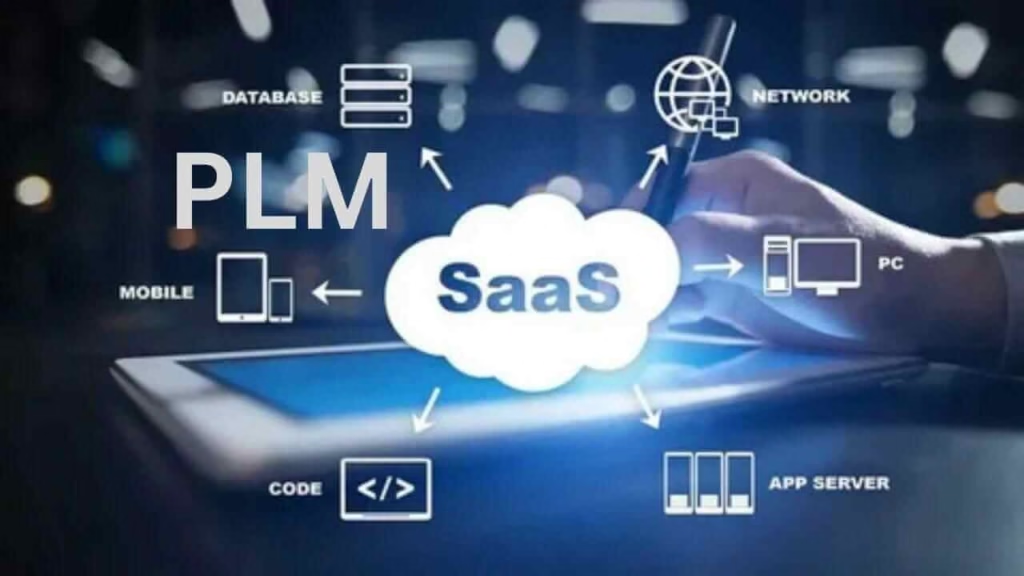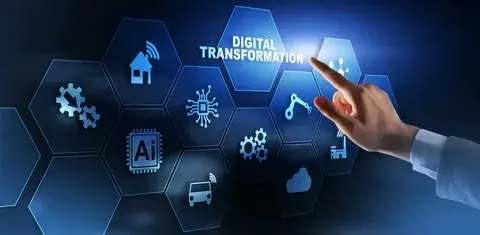Best Way to Migrate from AFile to PLM SaaS
Migrating from AFile to PLM SaaS (Product Lifecycle Management Software as a Service) may be a game-changer for businesses seeking to modernize their operations and embrace scalability. This manual combines all of the insights from diverse methods to make certain a continuing transition even as leveraging the advantages of PLM equipment, superior PLM software, and strategic PLM programs.

In this comprehensive guide, you’ll discover the best way to migrate from AFile to PLM SaaS, learn about migration types, and find practical examples to simplify the process. Whether you’re planning your PLM roadmap, addressing PLM data migration, or drafting platform migration plans, this article has you covered.
Relating PLM Migration to the Software Development Lifecycle
The process of migrate from AFile to PLM SaaS shares many similarities with the Software Development Lifecycle (SDLC). Just like in SDLC, where every phase—from planning and designing to testing and deployment—is crucial for creating effective software, a successful PLM data migration requires careful planning, thorough testing, and structured execution. For instance, the data cleansing and mapping phase in migration is much like the coding phase in SDLC, where precision is key. Similarly, test migrations mirror software testing, ensuring the final implementation runs smoothly without errors. By approaching your migration with the same structured mindset as the SDLC, you can ensure a seamless transition and long-term success.
Why Migrate from AFile to PLM SaaS?
Migrate from AFile to PLM SaaS offers numerous advantages, from improving collaboration to enhancing data security. Here’s why businesses are making the switch:
Top Benefits of PLM SaaS
- Scalability: Easily handle growing data as your business expands.
- Enhanced Collaboration: Access updated product data in real-time across teams and locations.
- Robust Security: Advanced encryption and compliance ensure your data stays protected.
- Lower IT Costs: Cloud-based totally platforms do away with the want for complicated on-premises infrastructure.
For example, an electronics agency reduced design cycle times by 30% after transitioning to PLM SaaS.
Their global teams were finally able to collaborate efficiently, leveraging shared product data securely.
Comprehensive Steps for Migration
Step 1: Evaluate Your Current System
Start by auditing your AFile system:
- Identify workflows that work well and those causing inefficiencies.
- Analyze data quality, including duplicates or outdated files.
- Understand how different departments interact with the system.
This assessment serves as the foundation for your migration strategy. For instance, a mid-sized manufacturer realized that inefficient version control issues on AFile delayed product launches. Their audit justified a switch to PLM SaaS, which resolved collaboration challenges.
Step 2: Define Clear Objectives
Why are you migrating? Define specific goals such as:
- Improving collaboration between teams.
- Automating workflows and reducing manual errors.
- Ensuring secure and efficient data storage.
Engage stakeholders across departments to align on these goals. A unified vision prevents misalignment during the migration.
Step 3: Choose the Right PLM SaaS Provider
Your PLM SaaS provider is a critical partner in this journey. Consider the following:
- Features: Does the provider offer the functionalities you need?
- Integration: Can it integrate seamlessly with CAD systems, ERP tools, and other enterprise solutions?
- Support: Is there robust Customer Support available?
Providers like Teamcenter are popular for their PLM application capabilities and integrations with essential tools. Evaluate multiple options through demos and customer reviews to make an informed decision.
Preparing Your PLM Roadmap
Step 4: Plan Your Platform Migration
Creating a PLM roadmap ensures a structured migration:
- Set Milestones: Break down the migration into manageable phases.
- Assign Roles: Define responsibilities for each team.
- Allocate Resources: Budget time and finances for training and system setup.
This roadmap keeps the migration process on track, reducing the risk of unexpected delays.
Step 5: Clean and Map Your Data
Data preparation is a crucial step:
- Remove duplicate and irrelevant data.
- Standardize naming conventions.
- Map AFile data structures to the new PLM SaaS model.
Collaboration with your provider ensures the data is migration-ready. Many platforms offer downloadable tools to simplify this process.
Step 6: Test Before Full Migration
A test migration is essential to identify issues before going live:
- Start with a small subset of data.
- Validate system functionality and data integrity.
- Collect feedback from users.
This approach minimizes disruptions during the final migration.
Step 7: Train Your Team
Training ensures your workforce is prepared to use the new system. Tailor sessions for different roles:
- Engineers: Focus on CAD integration and workflows.
- Managers: Emphasize automated reporting and collaboration tools.
Hands-on workshops and support materials like guides and tutorials make the transition smoother.
Executing the Migration
Step 8: Migrate with Confidence
With data cleaned, systems tested, and teams trained, you’re ready to migrate. Choose an approach that suits your organization:
- Big Bang: Move all data at once for a quicker transition.
- Incremental: Transition data in phases to minimize disruptions.
For large enterprises, the incremental approach often proves more manageable.
Step 9: Monitor and Optimize
Post-migration, closely monitor system performance:
- Address user concerns quickly.
- Gather feedback for workflow optimization.
- Stay in touch with your provider for updates and best practices.
This continuous improvement ensures your PLM SaaS system remains effective long-term.
Special Considerations for Migrate from AFile to PLM SaaS
Migration Types and Models
- Data-Centric Migration: Focuses on transferring files like BOMs and CAD documents.
- Process-Centric Migration: Includes workflow optimizations during the transition.
How to Overcome Challenges in PLM Data Migration
1. Data Center Migration vs Data Migration
Understand the difference:
- Data Center Migration: Moving physical infrastructure to the cloud.
- Data Migration: Transferring information between systems.
Focusing solely on data migration helps businesses transition faster while retaining existing systems.
2. Resistance to Change
To address this:
- Communicate benefits clearly.
- Involve stakeholders early.
- Provide extensive training post-migration.
3. Integration Challenges
Ensure compatibility between existing tools and the new platform. For instance, Teamcenter PLM is known for its seamless Integration Capabilities, which simplify data sharing across departments.
Migrate from AFile to PLM SaaS Benefits
Migrating to PLM SaaS unlocks numerous advantages, including:
- Scalability: Support growing data volumes without infrastructure upgrades.
- Real-Time Collaboration: Access the latest product data anytime, anywhere.
- Enhanced Security: Benefit from state-of-the-art cloud security measures.
- Reduced IT Overhead: No need for server maintenance or complex infrastructure.
- Centralized Data Management: Consolidate data into a single source of truth.
A Teamcenter PLM application case study revealed that migrating to PLM SaaS increased design collaboration by 30% for a global engineering firm.
Examples of Success: Migrate from AFile to PLM SaaS Teamcenter
A mid-sized electronics company recently completed their migration to Teamcenter, a leading PLM application. By focusing on:
- Data validation before migration
- Training teams for adoption
- Phased deployment across departments,
They successfully reduced errors by 25% and enhanced their product development cycle.
Best Practices for Migration Success
1. Invest in Training
A well-prepared team ensures faster adoption. Offer hands-on workshops and role-specific training.
2. Engage Experts
Consider hiring external consultants for large-scale migrations. They bring specialized expertise to handle complexities.
3. Monitor Post-Migration
After going live, track system performance and gather user feedback for continuous improvement.
4. Embrace Feedback
Use insights from team members to refine system usage.
Anecdote: Real-Life Success Story
After migrating to PLM SaaS, they reduced design cycle instances by 25% and empowered global teams to collaborate seamlessly.
Key Takeaways for a Seamless Migration
- Conduct a thorough assessment of your current system.
- Define clear objectives and involve stakeholders.
- Choose a reliable provider with industry expertise.
- Clean, organize, and validate your data meticulously.
- Train your team and test systems before the full migration.
Migrate from AFile to PLM SaaS Download Options
Download resources and migration templates from your PLM SaaS provider to simplify the process. Many providers offer downloadable migration guides to help organizations plan effectively.
Conclusion: A Transformative Journey
Migrate from AFile to PLM SaaS is more than a technology upgrade—it’s a strategic move towards greater efficiency, collaboration, and scalability. With a clear PLM roadmap, detailed preparation, and a focus on continuous improvement, your organization can unlock the full potential of PLM tools and PLM applications.
Take the first step today, and future-proof your business with PLM SaaS.


